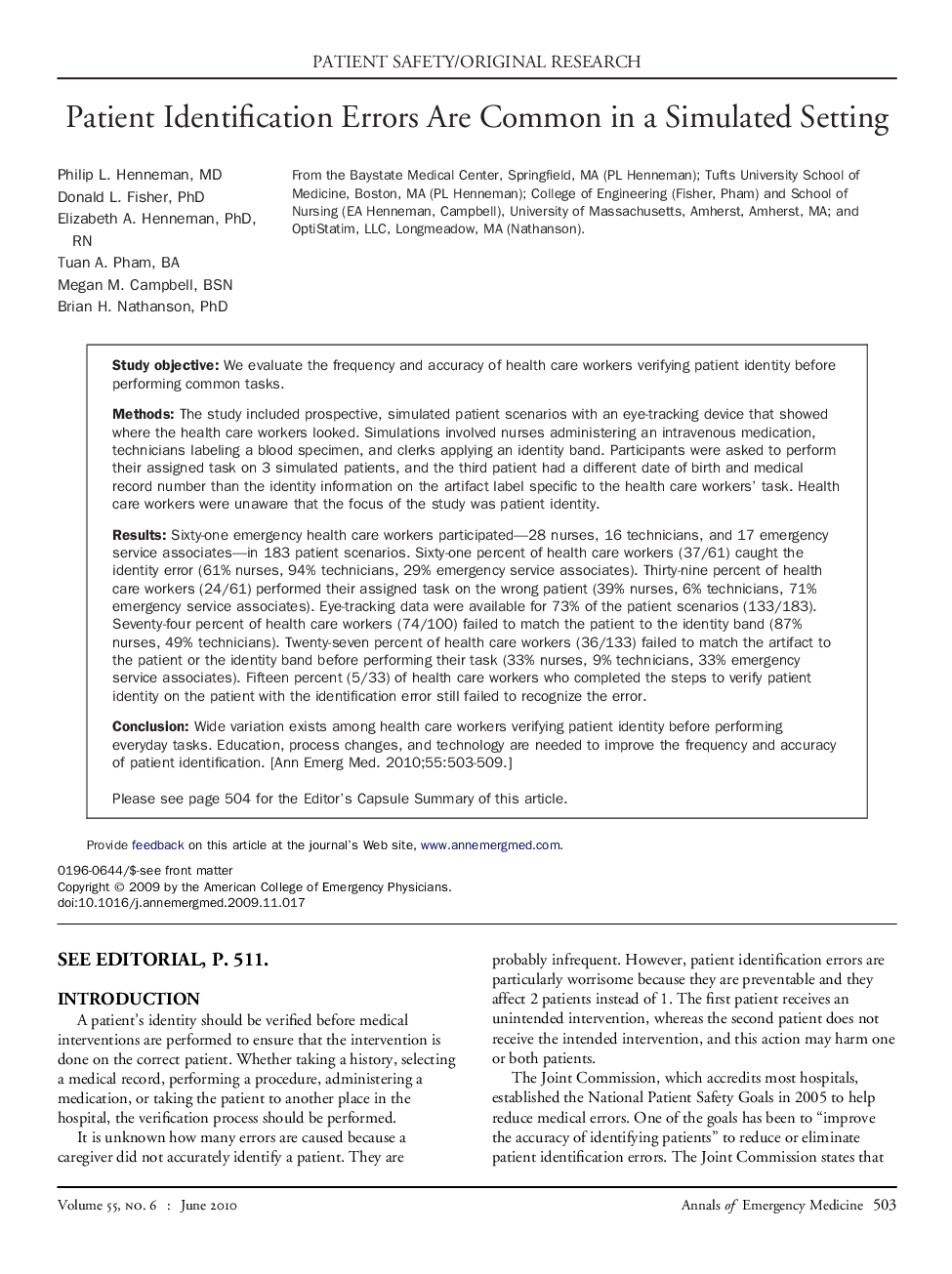| Article ID | Journal | Published Year | Pages | File Type |
|---|---|---|---|---|
| 3231543 | Annals of Emergency Medicine | 2010 | 7 Pages |
Study objectiveWe evaluate the frequency and accuracy of health care workers verifying patient identity before performing common tasks.MethodsThe study included prospective, simulated patient scenarios with an eye-tracking device that showed where the health care workers looked. Simulations involved nurses administering an intravenous medication, technicians labeling a blood specimen, and clerks applying an identity band. Participants were asked to perform their assigned task on 3 simulated patients, and the third patient had a different date of birth and medical record number than the identity information on the artifact label specific to the health care workers' task. Health care workers were unaware that the focus of the study was patient identity.ResultsSixty-one emergency health care workers participated—28 nurses, 16 technicians, and 17 emergency service associates—in 183 patient scenarios. Sixty-one percent of health care workers (37/61) caught the identity error (61% nurses, 94% technicians, 29% emergency service associates). Thirty-nine percent of health care workers (24/61) performed their assigned task on the wrong patient (39% nurses, 6% technicians, 71% emergency service associates). Eye-tracking data were available for 73% of the patient scenarios (133/183). Seventy-four percent of health care workers (74/100) failed to match the patient to the identity band (87% nurses, 49% technicians). Twenty-seven percent of health care workers (36/133) failed to match the artifact to the patient or the identity band before performing their task (33% nurses, 9% technicians, 33% emergency service associates). Fifteen percent (5/33) of health care workers who completed the steps to verify patient identity on the patient with the identification error still failed to recognize the error.ConclusionWide variation exists among health care workers verifying patient identity before performing everyday tasks. Education, process changes, and technology are needed to improve the frequency and accuracy of patient identification.
